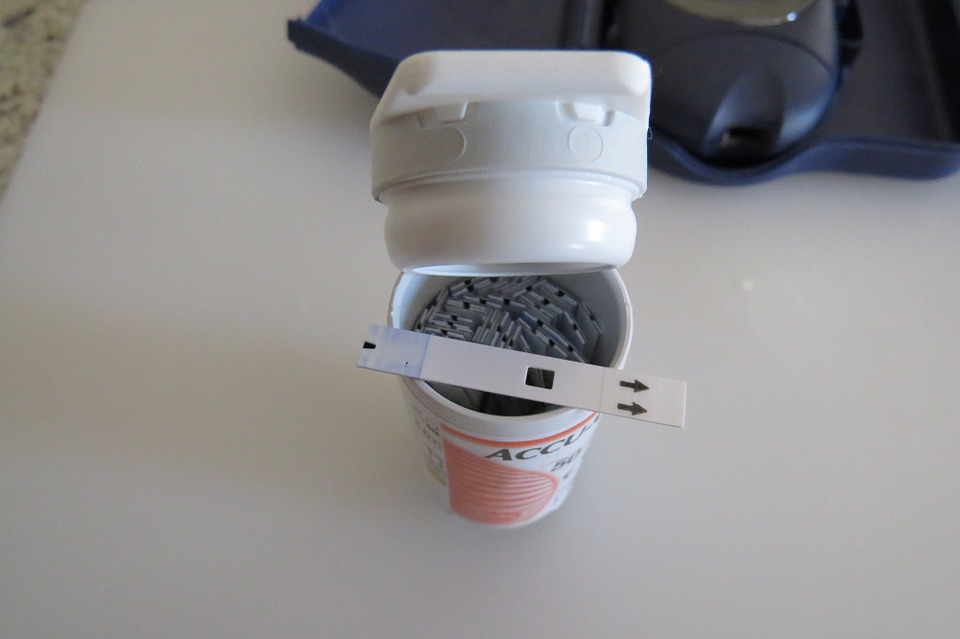The U.S. Food and Drug Administration (FDA) is warning that cases of a rare but serious infection of the genitals and area around the genitals have been reported with the class of type 2 diabetes medicines called sodium-glucose cotransporter-2 (SGLT2) inhibitors.
This serious rare infection, called necrotizing fasciitis of the perineum, is also referred to as Fournier’s gangrene. We are requiring a new warning about this risk to be added to the prescribing information of all SGLT2 inhibitors and to the patient Medication Guide.
SGLT2 inhibitors are FDA-approved for use with diet and exercise to lower blood sugar in adults with type 2 diabetes. SGLT2 inhibitors lower blood sugar by causing the kidneys to remove sugar from the body through the urine.
First approved in 2013, medicines in the SGLT2 inhibitor class include canagliflozin, dapagliflozin, empagliflozin, and ertugliflozin (see FDA-Approved SGLT2 Inhibitors).
In addition, empagliflozin is approved to lower the risk of death from heart attack and stroke in adults with type 2 diabetes and heart disease. Untreated, type 2 diabetes can lead to serious problems, including blindness, nerve and kidney damage, and heart disease.
Patients should seek medical attention immediately if you experience any symptoms of tenderness, redness, or swelling of the genitals or the area from the genitals back to the rectum, and have a fever above 100.4 F or a general feeling of being unwell. These symptoms can worsen quickly, so it is important to seek treatment right away.
Continue Reading Below ↓↓↓
Health care professionals should assess patients for Fournier’s gangrene if they present with the symptoms described above. If suspected, start treatment immediately with broad-spectrum antibiotics and surgical debridement if necessary. Discontinue the SGLT2 inhibitor, closely monitor blood glucose levels, and provide appropriate alternative therapy for glycemic control.
Fournier’s gangrene is an extremely rare but life-threatening bacterial infection of the tissue under the skin that surrounds muscles, nerves, fat, and blood vessels of the perineum. The bacteria usually get into the body through a cut or break in the skin, where they quickly spread and destroy the tissue they infect. Having diabetes is a risk factor for developing Fournier’s gangrene; however, this condition is still rare among diabetic patients.
Overall published literature about the occurrence of Fournier’s gangrene for men and women is very limited. Publications report that Fournier’s gangrene occurs in 1.6 out of 100,000 males annually in the U.S., and most frequently occurs in males 50-79 years (3.3 out of 100,000).1-3 In our case series, however, we observed events in both women and men.
In the five years from March 2013 to May 2018, we identified 12 cases of Fournier’s gangrene in patients taking an SGLT2 inhibitor. This number includes only reports submitted to FDA* and found in the medical literature,4-6 so there may be additional cases about which we are unaware.
In 2017, an estimated 1.7 million patients received a dispensed prescription for an SGLT2 inhibitor from U.S. outpatient retail pharmacies.7 Although most cases of Fournier’s gangrene have previously been reported in men, our 12 cases included 7 men and 5 women. Fournier’s gangrene developed within several months of the patients starting an SGLT2 inhibitor and the drug was stopped in most cases.
All 12 patients were hospitalized and required surgery. Some patients required multiple disfiguring surgeries, some developed complications, and one patient died. In comparison, only six cases of Fournier’s gangrene (all in men) were identified in review of other antidiabetic drug classes over a period of more than 30 years.
To help FDA track safety issues with medicines, we urge patients and health care professionals to report side effects involving SGLT2 inhibitors or other medicines to the FDA MedWatch program, using the information in the “Contact FDA” box at the bottom of the page.
*The cases were reported to the FDA Adverse Event Reporting System (FAERS).
FDA-Approved SGLT2 Inhibitors
| Brand Name | Active Ingredient(s) |
|---|---|
| Invokana | canagliflozin |
| Invokamet | canagliflozin and metformin |
| Invokamet XR | canagliflozin and metformin extended-release |
| Farxiga | dapagliflozin |
| Xigduo XR | dapagliflozin and metformin extended-release |
| Qtern | dapagliflozin and saxagliptin |
| Jardiance | empagliflozin |
| Glyxambi | empagliflozin and linagliptin |
| Synjardy | empagliflozin and metformin |
| Synjardy XR | empagliflozin and metformin extended-release |
| Steglatro | ertugliflozin |
| Segluromet | ertugliflozin and metformin |
| Steglujan | ertugliflozin and sitagliptin |
Additional Information for Patients
Continue Reading Below ↓↓↓
- Cases of a rare but serious infection of the genitals and areas around them have been reported with the class of type 2 diabetes medicines called sodium-glucose cotransporter-2 (SGLT2) inhibitors. This serious condition, called necrotizing fasciitis of the perineum or Fournier’s gangrene, can progress quickly and must be treated immediately because it can cause severe damage to the tissues around the genital area.
- Seek medical attention immediately if you experience any symptoms of tenderness, redness, or swelling of the genitals or the area from the genitals back to the rectum, and have a fever above 100.4 F or a general feeling of being unwell. These symptoms can worsen quickly.
- SGLT2 inhibitors can also cause local genital fungal infections, also known as yeast infections. Yeast infections are different from necrotizing fasciitis of the perineum (Fournier’s gangrene) because they cause limited local symptoms like vaginal or penile discharge, itching, or redness, and are not associated with fever or generally feeling unwell.
- Read the patient Medication Guide every time you receive a prescription for an SGLT2 inhibitor because there may be new or important additional information about your drug. The Medication Guide explains the benefits and risks associated with the medicine.
- To help FDA track safety issues with medicines, report side effects from SGLT2 inhibitors or other medicines to the FDA MedWatch program, use the following info:
Call: 855-543-DRUG (3784) and press 4
Email: [email protected]
Additional Information for Health Care Professionals
- Cases of necrotizing fasciitis of the perineum, also known as Fournier’s gangrene, have been reported in patients with type 2 diabetes receiving SGLT2 inhibitors. This adverse event is a life-threatening infection requiring urgent antibiotics and surgical intervention.
- Cases in patients receiving SGLT2 inhibitors have occurred in both females and males in almost equal frequency.
- Serious outcomes have included hospitalization, multiple surgeries, and death.
- Assess patients for Fournier’s gangrene if they present with tenderness, erythema, swelling in the genital or perineal area, fever, malaise, and have pain out of proportion to the physical exam.
- If Fournier’s gangrene is suspected, institute prompt treatment with antibiotics and surgical debridement, if appropriate. Discontinue the SGLT2 inhibitor, closely monitor blood glucose levels, and provide appropriate alternative therapy for glycemic control.
- Counsel patients to promptly seek medical attention if they experience any symptoms of tenderness, erythema, or swelling in the genital or perineal area, fever, or malaise.
- Encourage patients to read the Medication Guide they receive with their SGLT2 inhibitor prescriptions.
Facts about SGLT2 Inhibitors
- SGLT2 inhibitors are a class of prescription medicines approved for use with diet and exercise to lower blood sugar in adults with type 2 diabetes.
- Medicines in the SGLT2 inhibitor class include canagliflozin, dapagliflozin, empagliflozin, and ertugliflozin. They are available as single-ingredient products and also in combination with other diabetes medicines such as metformin (see FDA-approved SGLT2 Inhibitors).
SGLT2 inhibitors lower blood sugar by causing the kidneys to remove sugar from the body through the urine. - Common side effects of SGLT2 inhibitors include yeast infections, urinary tract infections, and low blood sugar when combined with other prescription diabetes medicines.
- In 2017, an estimated 1.7 million patients received a dispensed prescription for an SGLT2 inhibitor from U.S. outpatient retail pharmacies.7
Data Summary
Overall published literature about the incidence of Fournier’s gangrene in men and women is very limited. Publications using the U.S. State Inpatient Database (SID) from 593 civilian hospitals of 13 states in 2001 and 21 states in 2004 reported that Fournier’s gangrene occurs in 1.6 out of 100,000 males annually in the U.S., with the highest incidence occurring in males 50-79 years (3.3 out of 100,000).
Although the publications reported 39 female Fournier’s gangrene cases, the investigators restricted analysis for females descriptively without incidence inference because the identification and ascertainment of Fournier’s gangrene in females and males were different (i.e., there is no Fournier’s gangrene code for females but a specific code for males) and low yield number of female Fournier’s gangrene cases preclude any meaningful incidence analysis.1-3
A search of the FDA Adverse Event Reporting System (FAERS) database from March 2013, when the first SGLT2 inhibitor was approved, to February 2018 and the medical literature through May 2018 identified 12 cases of Fournier’s gangrene in patients taking an SGLT2 inhibitor.4-6 The patients ranged in age from 38-78 years. Seven cases were reported in men and five in women. The average time to onset was 9.2 months (range 7 days to 25 months).
All drugs in the SGLT2 inhibitor class except ertugliflozin had associated Fournier’s gangrene. As the most recently approved SGLT2 inhibitor, there is insufficient patient use to assess the risk of Fournier’s gangrene with ertugliflozin. However, it would be expected to have the same risk for this rare and serious infection as other SGLT2 inhibitors.
Among the 12 cases, all patients were hospitalized and one patient died. All 12 required surgical debridement, five of which required more than one surgery and one required skin grafting. The clinical course for four patients was complicated by diabetic ketoacidosis, acute kidney injury, and septic shock, prolonging their hospitalizations or leading to death. Two patients were transferred to a rehabilitation hospital. The SGLT2 inhibitor was discontinued in eight cases; one patient died; and information on drug continuation or discontinuation was not included in three cases.
Because diabetes is a known risk factor for Fournier’s gangrene, we also searched FAERS for cases with several other classes of antidiabetic agents (insulins, biguanides, sulfonylureas, and dipeptidyl peptidase-4 inhibitors) to help assess whether the cases of Fournier’s gangrene with the SGLT2 inhibitors are more likely to be associated with the underlying condition of diabetes as opposed to the drug.
In the 34 years between 1984 and 2018, we identified only six additional cases of Fournier’s gangrene in FAERS). All six patients were males and their median age was 57 years (range 42-71). Five of these patients were hospitalized and one died. This contrasts with the findings for Fournier’s gangrene with the SGLT2 inhibitors where more cases were reported over a shorter timeframe, and cases involved both males and females. FAERS data have limitations. Many factors can influence whether or not an event will be reported.
References
- Sorensen MD, Krieger JN, Rivara FP, Broghammer JA, Klein MB, Mack CD, Wessells H. Fournier’s gangrene: population based epidemiology and outcomes. J Urol 2009;181:2120-6.
- Sorensen MD, Krieger JN, Rivara FP, Klein MB, Wessells H. Fournier’s gangrene: management and mortality predictors in a population based study. J Urol 2009;182:2742-7.
- Sorensen MD, Krieger JN. Fournier’s gangrene: epidemiology and outcomes in the general US population. Urol Int 2016;97:249-59.
Cecilia-Chi W, Lim-Tio S. Fournier’s syndrome: a life threatening complication of SGLT2 inhibition in poorly controlled diabetes mellitus. 2016 Joint Annual Scientific Meeting of the Australian Diabetes Educators Association (ADEA) and Australian Diabetes Society (ADS). Abstract number 265. - Kumar S, Costello AJ, Colman PG. Fournier’s gangrene in a man on empagliflozin for treatment of Type 2 diabetes. Diabet Med 2017;34:1646-8.
Omer T, Sree Dharan S, Adler A. Sodium-glucose cotransporter 2 (SGLT2) inhibitor dapagliflozin and Fournier’s gangrene: A life threatening severe adverse outcome: Case report. Diabet Med 2018;35(Suppl 1):100. - IQVIA, Total Patient Tracker (TPT) database. 2017. Extracted January 2018.





